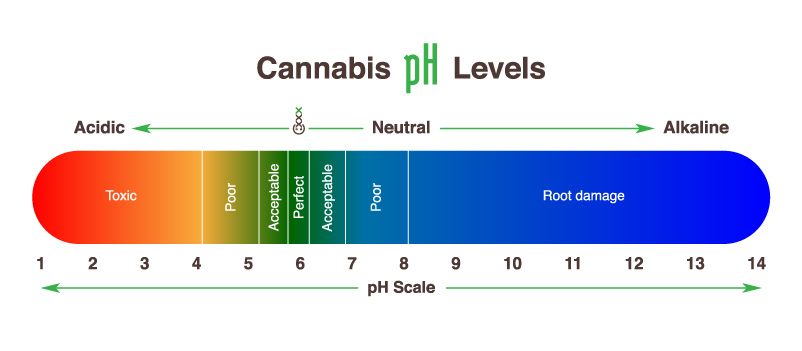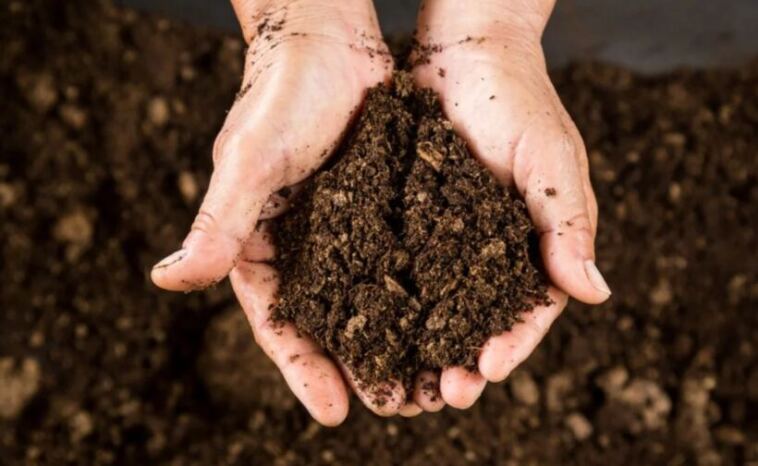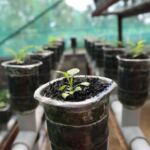- Like
- SHARE
- Digg
- Del
- Tumblr
- VKontakte
- Flattr
- Buffer
- Love This
- Save
- Odnoklassniki
- Meneame
- Blogger
- Amazon
- Yahoo Mail
- Gmail
- AOL
- Newsvine
- HackerNews
- Evernote
- MySpace
- Mail.ru
- Viadeo
- Line
- Comments
- Yummly
- SMS
- Viber
- Telegram
- JOIN
- Skype
- Facebook Messenger
- Kakao
- LiveJournal
- Yammer
- Edgar
- Fintel
- Mix
- Instapaper
- Copy Link
Introduction
Cannabis cultivation is an intricate process that requires attention to various factors, one of the most crucial being the pH level of the soil.
Peat, a popular organic component in many cannabis soil mixes, is known for its acidic nature. While peat-based cannabis soil offers numerous benefits, such as excellent water retention and aeration, maintaining the right pH is essential for optimal plant growth.
In this article, we’ll delve into the nuances of adjusting pH in peat cannabis soil.
Understanding the Importance of pH in Cannabis Cultivation
The pH level, which stands for “potential of hydrogen,” measures the acidity or alkalinity of a substance.
For cannabis plants grown in peat moss mix, the ideal pH range typically lies between 6.0 to 6.8. This range ensures that the plant can effectively absorb all the essential nutrients from the soil.
A pH level outside this range can lead to nutrient lockout, where the cannabis plant struggles to take in necessary nutrients, affecting its health and yield.

Best pH for Flowering Stage in Soil
During the flowering stage, cannabis plants have specific nutrient needs. They require more phosphorus and potassium, which are essential for bud development. To ensure that these nutrients are readily available, the soil’s pH should be slightly acidic.
For soil-grown cannabis during the flowering stage, the ideal pH range is 6.2 to 6.8. Within this range, the plant can effectively absorb phosphorus, potassium, and other essential nutrients required for robust bud formation.
Maintaining the right pH in the soil during the flowering stage is crucial for cannabis cultivation. Regular monitoring and adjustments, as needed, will ensure that your cannabis plants have the best environment to thrive during this critical stage.
Why Peat Soil and pH Matter
Peat-based cannabis soil, derived from decomposed organic matter like sphagnum moss, is naturally acidic.
While this acidity can benefit certain plants, cannabis requires a slightly more neutral environment.
Therefore, regular monitoring and adjustment of pH in peat cannabis soil become imperative.
Steps to Adjust pH in Peat Cannabis Soil
Testing the pH:
Before making any adjustments, it’s essential to know the current pH level of your soil. Using a soil pH testing kit or a digital pH meter, you can get an accurate reading. These tools are invaluable for any cannabis cultivator.
Raising the pH:
If your peat soil is too acidic (below 6.0), you’ll need to make it more alkaline. One common method is by adding lime. Lime not only raises the pH but also provides essential nutrients like calcium and magnesium. Another option is wood ash, which can be sprinkled on the soil’s surface.
Lowering the pH:
If the pH is too high (above 6.8), making the soil more acidic is the goal. Elemental sulfur is a popular choice for this. It’s slow-acting, so patience is required. Another option is using organic solutions like vinegar or lemon juice, but these are more temporary fixes.
Re-test and Monitor:
After adjusting the pH, wait for a few days and then test the soil again. This ensures that the changes have taken effect and that the soil is stable. Regular monitoring is key, as pH can fluctuate based on factors like watering and added nutrients.
How to Adjust pH in Peat Cannabis Soil Indoor
Peat, known for its naturally acidic nature, requires careful pH management to ensure cannabis plants thrive indoors.
Here’s how to adjust pH in peat cannabis soil specifically tailored for indoor growers:
Steps to Adjust pH in Indoor Peat Cannabis Soil
- Testing the pH: Before making any adjustments, use a soil pH testing kit or a digital pH meter to determine the current pH level of your indoor soil. These tools are invaluable for any cannabis cultivator.
- Raising the pH: If your indoor peat soil is too acidic (below 6.0), consider adding lime. Lime not only raises the pH but also provides essential nutrients like calcium and magnesium. Another option is wood ash, which can be sprinkled on the soil’s surface.
- Lowering the pH: If the pH is too high (above 6.8), the goal is to make the soil more acidic. Elemental sulfur is a popular choice for this. It’s slow-acting, so patience is required. Organic solutions like vinegar or lemon juice can also be used, but they offer more temporary fixes.
- Re-test and Monitor: After adjusting the pH, wait a few days and then test the soil again. Regular monitoring is key, as pH can fluctuate based on factors like watering and added nutrients.
Factors Affecting pH in Peat Cannabis Soil
Water Quality:
The pH of your water source can significantly impact the soil’s pH. It’s always a good idea to test and, if necessary, adjust the pH of your water before using it on your plants.
Nutrient Solutions:
Some fertilizers can alter soil pH. It’s essential to choose quality, balanced fertilizers and avoid over-fertilizing, which can lead to pH imbalances and other issues.
Why Choose Peat Moss?
Derived from decomposed organic matter, primarily sphagnum moss, peat moss can be a game-changer for your cannabis garden if used correctly.
- Water Retention: Peat moss can retain water up to 20 times its weight, ensuring consistent moisture for your cannabis plants, especially crucial in drier climates.
- Nutrient-Rich: Apart from its water retention capabilities, peat moss is also rich in essential micronutrients. It can hold onto a plethora of nutrients, making them readily available for plant roots.
- Contaminant-Free: Being a relatively sterile medium, peat moss is devoid of weed seeds, pests, and pathogens, ensuring a safe growing environment for your cannabis.
- Acidic Nature: Peat moss naturally has an acidic pH, which can be beneficial for cannabis growth. However, regular pH monitoring is essential to prevent any imbalances.
Techniques for Growing Cannabis in Peat Moss
- Preparation is Key: Before integrating peat moss into your garden, it’s essential to prepare it. Place a significant amount of peat moss in a large container, moisten it thoroughly, and leave it outside for a few weeks. This process makes the moss more absorbent and enriches it with vital micronutrients.
- Mixing with Other Media: While peat moss is beneficial, it’s often mixed with other mediums for optimal growth. Combining peat moss with equal parts of quality potting soil and perlite can create an ideal mix for cannabis cultivation.
- Monitoring pH Levels: Given its acidic nature, it’s crucial to regularly check the pH levels of your peat moss mixture. If the pH drifts outside the optimal range for cannabis (typically between 6.0 to 7.0), adjustments may be necessary.
- Watering Practices: Due to its water retention properties, overwatering can be a concern with peat moss. Ensure a balanced watering routine, allowing the medium to dry out slightly between watering sessions.
Peat Soil: A Double-Edged Sword
Peat, derived from decomposed organic matter like sphagnum moss, offers a naturally acidic environment.
While this characteristic of peat can be beneficial for certain plants, cannabis thrives in a slightly more neutral setting.
This inherent acidity of peat makes the task of pH calibration even more critical for cannabis cultivators.
Best Cannabis Peat Soil Brands
Several brands offer high-quality peat-based soils that are favored by cannabis cultivators. Here are some of the best cannabis peat soil brands:
1. FoxFarm Ocean Forest Potting Soil:
This is a popular choice among cannabis growers. It’s a blend of earthworm castings, bat guano, and Pacific Northwest sea-going fish and crab meal. It also contains sandy loam, forest humus, and sphagnum peat moss, making it an excellent medium for cannabis.
2. Black Gold Natural & Organic Potting Soil:
This brand offers a rich blend of peat moss and compost. It’s known for its excellent water retention and drainage properties, making it suitable for cannabis cultivation.
3. Roots Organics Original Potting Soil:
A peat-based soil, it’s enriched with coco fibers to enhance its aeration properties. It’s also amended with organic fertilizers, making it a nutrient-rich choice for cannabis plants.
4. Pro-Mix BX Mycorrhizae:
This is a general-purpose peat-based professional growing medium. It contains a beneficial mycorrhizal inoculum (Glomus intraradices), which helps in increasing the uptake of water and nutrients.
5. CANNA Terra Professional:
This brand offers a nitrogen-rich potting mix that also contains peat moss and perlite. It’s specifically designed for indoor cultivation but works well for outdoor grows too.
6. Biobizz Light-Mix:
This is an organic peat-based soil mix that provides a light and airy environment for cannabis roots, allowing for rapid root development.
7. Sunshine Mix #4 with Mycorrhizae:
This mix contains Canadian sphagnum peat moss, perlite, and major and minor nutrients. The added mycorrhizae help in enhancing nutrient and water uptake.
Peat vs. Coco Coir for Cannabis: A Quick Comparison
When it comes to cannabis cultivation, the choice of growing medium plays a pivotal role in the plant’s overall health and yield. Two popular choices among growers are peat and coco coir.
Let’s dive into a concise comparison of these two mediums.
Peat Moss:
- Origin: Derived from decomposed organic matter, primarily sphagnum moss.
- pH Level: Naturally acidic, often requiring lime to balance its pH for cannabis growth.
- Water Retention: Excellent water-holding capacity, but can sometimes lead to overwatering if not monitored.
- Sustainability: Harvesting peat can be environmentally damaging, leading to concerns about its sustainability.
- Nutrients: Contains some essential nutrients but may require additional fertilization for optimal cannabis growth.
Coco Coir:
- Origin: Made from the husk of coconuts, it’s a byproduct of the coconut industry.
- pH Level: Neutral to slightly alkaline, often considered ideal for cannabis.
- Water Retention: Excellent moisture retention while also providing good drainage, reducing the risk of overwatering.
- Sustainability: Considered a renewable resource since it’s a byproduct of another industry.
- Nutrients: Generally inert, meaning it doesn’t provide nutrients on its own. Requires nutrient-rich water or added fertilizers for cannabis growth.
Both peat and coco coir have their advantages and drawbacks. While peat moss offers some inherent nutrients, its sustainability is a concern.
On the other hand, coco coir is environmentally friendly and pH-balanced but requires careful nutrient management.
The choice between the two often boils down to personal preference, cultivation practices, and environmental considerations.
FAQ: How to Adjust pH in Peat Cannabis Soil
Q1: What is the ideal pH range for cannabis grown in peat soil?
A: The optimal pH range for cannabis cultivated in peat soil is between 6.0 to 6.8. This range ensures effective nutrient absorption and healthy plant growth.
Q2: Why is pH important for cannabis cultivation in peat soil?
A: pH affects the soil’s nutrient availability. If the pH is too high or too low, it can lock out essential nutrients, preventing the cannabis plant from accessing them, leading to deficiencies or toxicities.
Q3: How can I test the pH of my peat cannabis soil?
A: You can test the pH using pH testing kits, pH drops, or digital pH meters. These tools provide accurate readings, helping growers make informed adjustments.
Q4: Peat is naturally acidic. How can I raise the pH if it’s too low?
A: To raise the pH of acidic peat soil, you can incorporate lime (either dolomitic or calcitic). Lime not only adjusts the pH but also adds essential nutrients like calcium and magnesium to the soil.
Q5: How can I lower the pH if my peat soil is too alkaline?
A: To decrease the pH of peat soil, you can use elemental sulfur or organic acids like vinegar. However, always apply in moderation and retest the pH to avoid over-adjustment.
Q6: How often should I check the pH of my peat cannabis soil?
A: It’s advisable to check the pH regularly, especially after making adjustments or adding fertilizers. Monitoring once every two weeks is a good practice, but more frequent checks can be beneficial during crucial growth stages.
Q7: Can overwatering affect the pH of my peat cannabis soil?
A: Yes, overwatering can lead to various issues, including pH fluctuations. It can cause nutrient leaching, which might alter the soil’s pH. Always ensure proper drainage to maintain a stable pH.
Q8: Are there any natural ways to adjust the pH of peat cannabis soil?
A: Yes, organic matter like compost or worm castings can help buffer the soil pH. Additionally, natural ingredients like wood ash can raise pH, while pine needles or coffee grounds can lower it.
Q9: How do I ensure the pH remains stable over time?
A: Regular monitoring, using quality water, and avoiding excessive fertilization can help maintain a stable pH. Additionally, incorporating pH buffering agents or materials can provide long-term stability.
Q10: Can I use tap water to adjust the pH of my peat cannabis soil?
A: Tap water can sometimes contain minerals or chemicals that affect pH. It’s essential to test the pH of your tap water and, if necessary, use pH-adjusted water or consider using filtered or distilled water for your cannabis plants.
Conclusion
Adjusting and maintaining the right pH in peat cannabis soil is crucial for the health and yield of your plants.
With regular monitoring, the right tools, and a bit of knowledge, you can ensure that your cannabis plants thrive in an environment tailored to their needs.
Whether you’re a novice grower or a seasoned cultivator, understanding the intricacies of pH and its impact on cannabis growth is a step towards a successful harvest.


